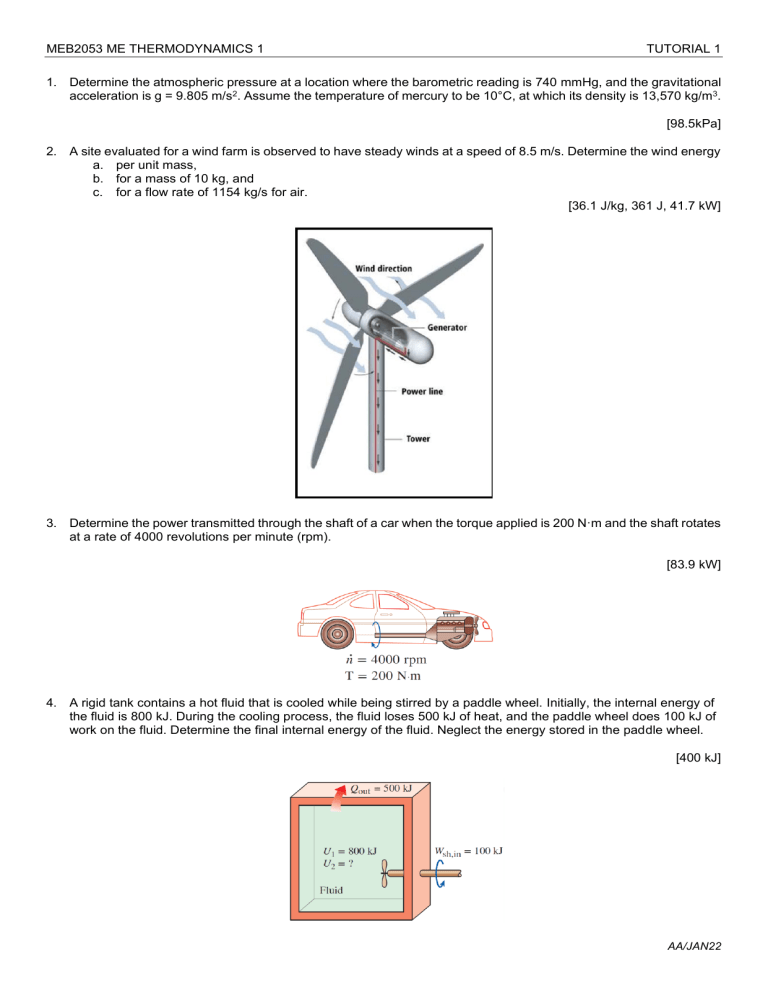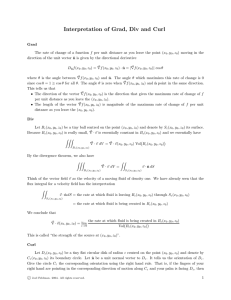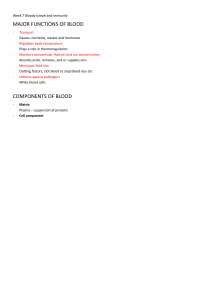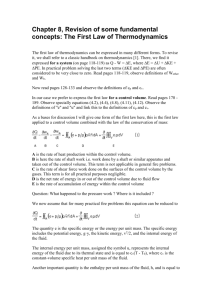
MEB2053 ME THERMODYNAMICS 1 TUTORIAL 1 1. Determine the atmospheric pressure at a location where the barometric reading is 740 mmHg, and the gravitational acceleration is g = 9.805 m/s2. Assume the temperature of mercury to be 10°C, at which its density is 13,570 kg/m3. [98.5kPa] 2. A site evaluated for a wind farm is observed to have steady winds at a speed of 8.5 m/s. Determine the wind energy a. per unit mass, b. for a mass of 10 kg, and c. for a flow rate of 1154 kg/s for air. [36.1 J/kg, 361 J, 41.7 kW] 3. Determine the power transmitted through the shaft of a car when the torque applied is 200 N·m and the shaft rotates at a rate of 4000 revolutions per minute (rpm). [83.9 kW] 4. A rigid tank contains a hot fluid that is cooled while being stirred by a paddle wheel. Initially, the internal energy of the fluid is 800 kJ. During the cooling process, the fluid loses 500 kJ of heat, and the paddle wheel does 100 kJ of work on the fluid. Determine the final internal energy of the fluid. Neglect the energy stored in the paddle wheel. [400 kJ] AA/JAN22 MEB2053 ME THERMODYNAMICS 1 TUTORIAL 1 5. The lighting needs of a classroom are met by 30 fluorescent lamps, each consuming 80 W of electricity. The lights in the classroom are kept on for 12 hours a day and 250 days a year. For a unit electricity cost of 11 cents per kWh, determine the annual energy cost of lighting for this classroom. [$792/year] 6. At a certain location, wind is blowing steadily at 10 m/s. Determine the mechanical energy of air per unit mass (in kJ/kg) and the power generation potential of a wind turbine with 60-m-diameter blades at that location. Take the air density to be 1.25 kg/m3. [0.05 kJ/kg, 1767.15 kW] 7. At winter design conditions, a house is projected to lose heat at a rate of 60,000 kJ/h. The internal heat gain from people, lights, and appliances is estimated to be 6000 kJ/h. If this house is to be heated by electric resistance heaters, determine the required rated power of these heaters in kW to maintain the house at constant temperature. [15 kW] 8. A classroom that normally contains 40 people is to be air-conditioned with window air-conditioning units of 5-kW cooling capacity. A person at rest may be assumed to dissipate heat at a rate of about 360 kJ/h. There are 10 lightbulbs in the room, each with a rating of 100 W. The rate of heat transfer to the classroom through the walls and the windows is estimated to be 15,000 kJ/h. If the room air is to be maintained at a constant temperature of 21 °C, determine the number of window air-conditioning units required. [2 units] 9. Consider a 1400-kg car cruising at constant speed of 70 km/h. Now the car starts to pass another car, by accelerating to 110 km/h in 5 s. Determine the additional power needed to achieve this acceleration. What would your answer be if the total mass of the car were only 700 kg? [77.8 kW, 38.9 kW] 10. A person gets into an elevator at the lobby level of a hotel together with his 30-kg suitcase and gets out at the 10th floor 35 m above. Determine the amount of energy consumed by the motor of the elevator that is now stored in the suitcase. [10.3 kJ] AA/JAN22




